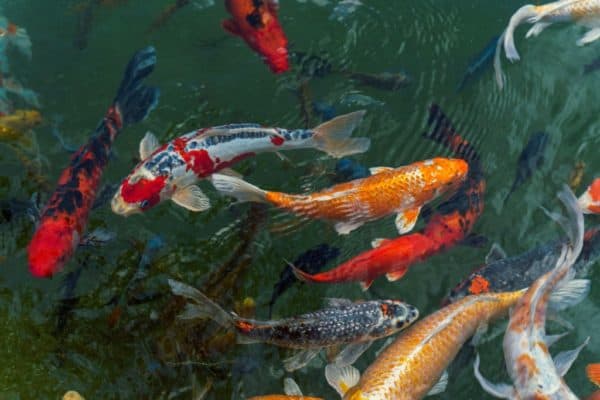Adding fish to your water feature is a great way to give it a little extra personality, though it does take a bit of work to keep it sustainable.
Fish can be a good addition to any water feature with proper care and preparation, depending on the species of the fish and the location of the water feature.
Knowing how to properly care for the fish, as well as understanding which fish are best for your environment will also aid in the decision of adding them to your pond. Below, particulars are given to help you prepare for fish, choose finish, and greater details about the good and bad side of adding them to your water.
Preparing for Fish
When making the decision as to whether or not to add fish to a water feature, it is important to understand what things will have to be done before you start, and the additional tasks that will be added as you maintain your pond throughout the year.
Obviously, fish will need to be fed, and they will require a specific temperature of water. Before any of these requirements, consider the placement of your water feature. Fish generally will need shade during the hot times of the summer, while the plants you choose may need full sun. Whichever is a greater priority should be considered as you choose a location for your water feature.
If your water feature will be dug into the ground, it is also important to consider the drainage of the pond, and the drainage coming from rain and other sources of water that would come into your pond. For example, placing a pond on the low point in the grass will mean more water pools into your pond then if you were to place it on higher ground.
Having the water feature submerged in the ground will also aid in regulating a good water temperature.
It may also be necessary to get a water filtration system installed when putting fish in your pond. This will make sure that the water doesn’t contain any harmful contaminents that would kill your fish.
Extra Precautions for Fish
Once fish are in the pond, it is important that the water remains at an even temperature. The best average temperature for fish is between 65°F and 75°F. Source. In the winter and hot summer, this can be hard to achieve, which may mean you will also need to install a water heater, relocate your fish for a season, and provide shade in the sun.
The type of water that is in your water feature will also have a great impact on your fish. For example, water from your home or garden hose will often contain traces of chlorine, which can be harmful for the fish. It is best to use well water, filtered water, or rainwater.
As previously mentioned, fish will also need shade. Plants will provide this as well as providing protection from the occasional predator.
Benefits Fish Bring
Fish have many benefits when placed in a water feature. Not only do they add a living aspect of beauty to your water feature, but they can also aid in keeping plants alive and the water clear. These benefits though, can also become problematic if proper care and precautions are not pursued.
Oftentimes algae and other water plants grow in ponds, making the water unclear and murky and giving it a swap-like smell. Fish are great natural cleaners, they will eat algae and other plant-based debris. They will also help keep insect levels down as they eat undesirable larvae.
Constraint of Fish
Adding fish to a water feature will definitely add more work, and maintenance. Some things will have to be avoided, and the lives of your fish closely guarded.
They will require a filtration system, which, in addition to their food and other supplies, will add to the overall cost. As a matter of fact “a medium-sized fish pond with a recirculating waterfall and pond plants ready for your koi and goldfish is typically going to cost between $18,000 and $30,000” Source.
They are also prone to going missing because of dogs, cats, birds, or other forms of predators. It also requires a careful watch over the temperature outdoors and the temperature of the water. It would also be helpful to add more plants to provide shade.
Best Types of Fish
There are quite a few fish that you can add to your pond. Their color and way of life will add another calming aspect to your water feature. There are a number of options for lower maintenance fish that will make adding fish less of a hassle.
Goldfish, Koi, Minnows, and Tenches are all good options. Source.
Goldfish are easy going and hardier than some people may think. They can stay alive even when the pond may freeze over slightly, and they offer beautiful shades of oranges, yellows, and blacks. Downsides include their need for protection, as they are easy prey for cats, dogs and birds.
Koi fish also have similar needs, but come in a larger variety of sizes and colors, and tend to live a little longer if properly taken care of. Goldfish and Koi also produce lots of waste and are sometimes coined a “dirty fish”.
On the other hand, Golden Tenches can be a great option for your pond because of their willingness to clean up after other fish, eating their waste and also creating a pleasing color. Minnows come in even more colors than tenches, and they can live up to three years if well taken care of. Though they are smaller, and therefore more prone to be prey for birds, they can still be a great addition to your pond.
Overall, the best option for your pond seems to be koi. Their wide range of colors can provide an excellent visual experience, and their longer life span makes them a more attractive purchase.

